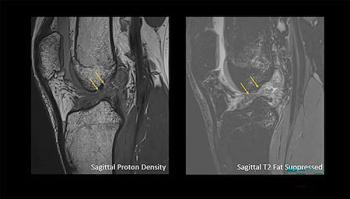
CT Radiomics Nomogram Shows Promise in Predicting Early Recurrence of Hepatocellular Carcinoma After Liver Transplant
A new study showed that the computed tomography radiomics nomogram model had 21.7 percent higher accuracy, 16.7 percent higher sensitivity and 23.5 higher specificity in comparison to a clinical model in a validation cohort.
Approximately 780,000 people a year are diagnosed with hepatocellular carcinoma (HCC), which is reportedly the sixth most common cancer worldwide. While liver transplant has been recognized as an effective treatment for HCC, multiple studies have shown five-year recurrence rates ranging between 20 to 57.8 percent.
However, the authors of a new study suggested that a
In the retrospective study involving 151 patients with HCC who had a liver transplant, researchers found that a nomogram radiomics model demonstrated enhanced accuracy, sensitivity, and specificity in predicting the risk of early HCC recurrence after liver transplant in comparison to a radiomics clinical model that relied solely on preoperative clinical factors.
The clinical model, comprised of key clinical factors from a multivariate analysis, had 67.4 percent accuracy, 75 percent sensitivity and 64.7 percent specificity in a validation cohort for predicting early HCC recurrence, according to the study. The radiomics signature model, which incorporated 13 radiomics features from enhanced CT images, demonstrated 82.6 percent accuracy, 91.7 percent sensitivity and 79.4 percent specificity. The researchers said the nanogram model, which combined assessments of alpha-fetoprotein (AFP) and gamma-glutamyl transferase (GGT) with the radiomics signature, had 89.1 percent accuracy, 91.7 percent sensitivity and 88.2 percent specificity.
“These findings demonstrated that the nomogram noninvasively and effectively assessed the risk of early recurrence with better clinical usefulness than the clinical model,” wrote Jing-Wei Zhao, Ph.D., who is affiliated with the Zhejiang University School of Medicine in China, and colleagues.
While tumor diameter and differentiation as well as microvascular invasion (MVI) and AFP are key factors when it comes to the development of HCC recurrence after liver transplant, the study authors said they do not sufficiently capture the full biological characteristics of solid tumors that are heterogeneous in nature.
“Radiomics offers the advantage of detecting the whole tumor, which can provide heterogeneity information and improve the accuracy of clinical decision-making,” added Zhao and colleagues. “Radiomics can analyze various tumor images and then predict patient prognosis.”
In regard to study limitations, the authors acknowledged the data coming from a retrospective, single-center study and that one CT scanner was used to acquire the images in the study. They also pointed out that most of the patients in the study cohort had hepatitis B virus, which may hamper broader application of the results.
Newsletter
Stay at the forefront of radiology with the Diagnostic Imaging newsletter, delivering the latest news, clinical insights, and imaging advancements for today’s radiologists.




























